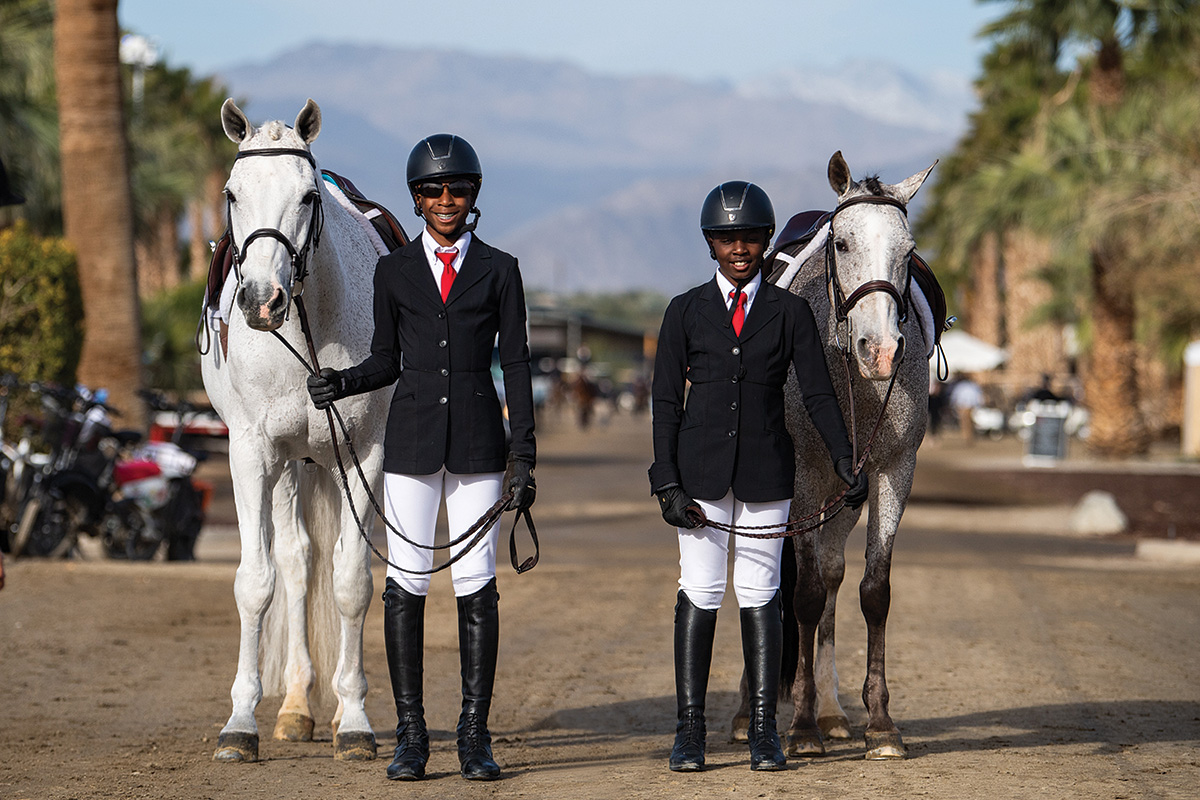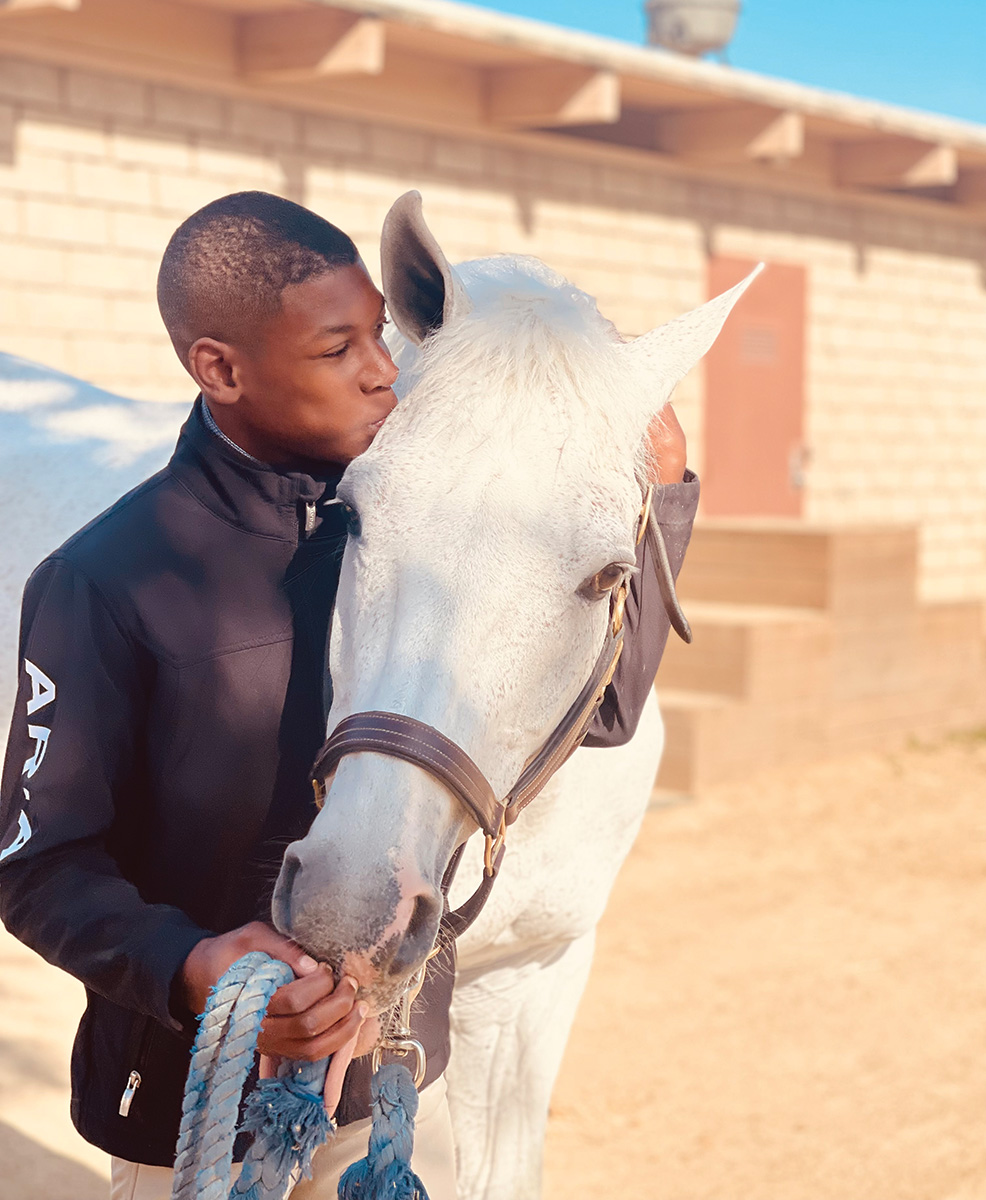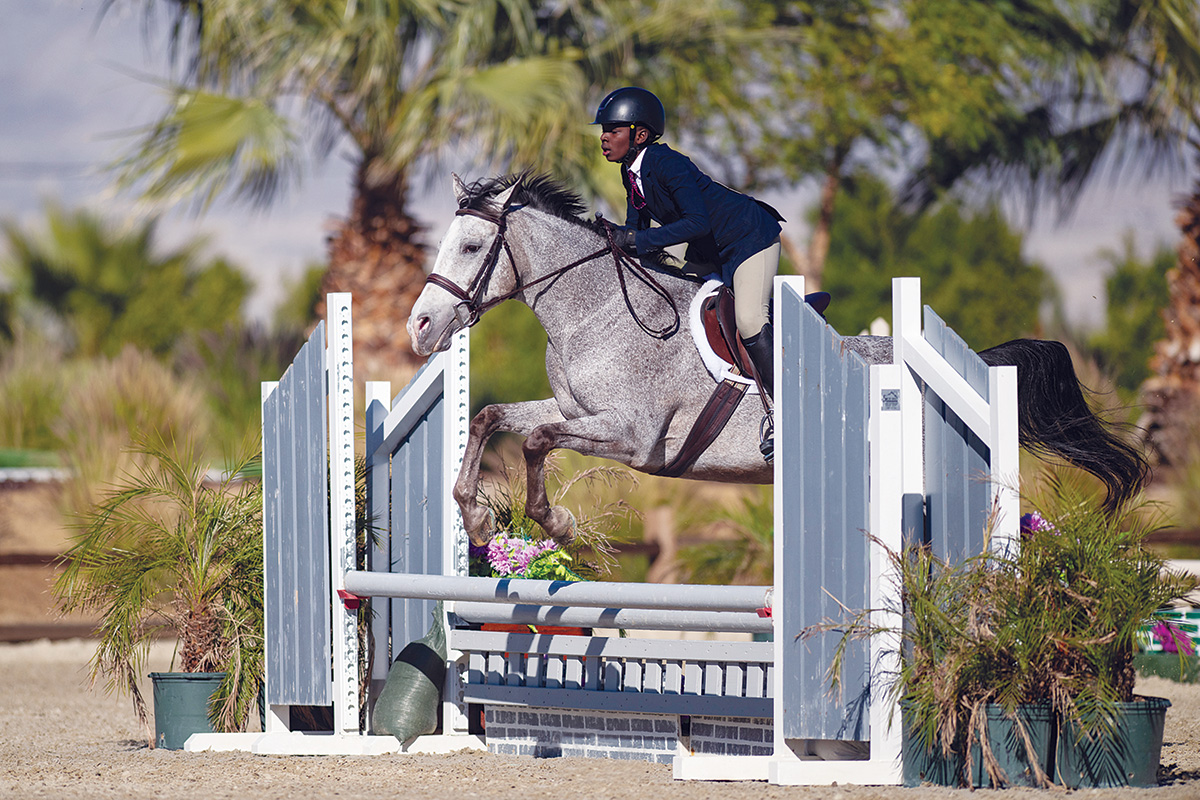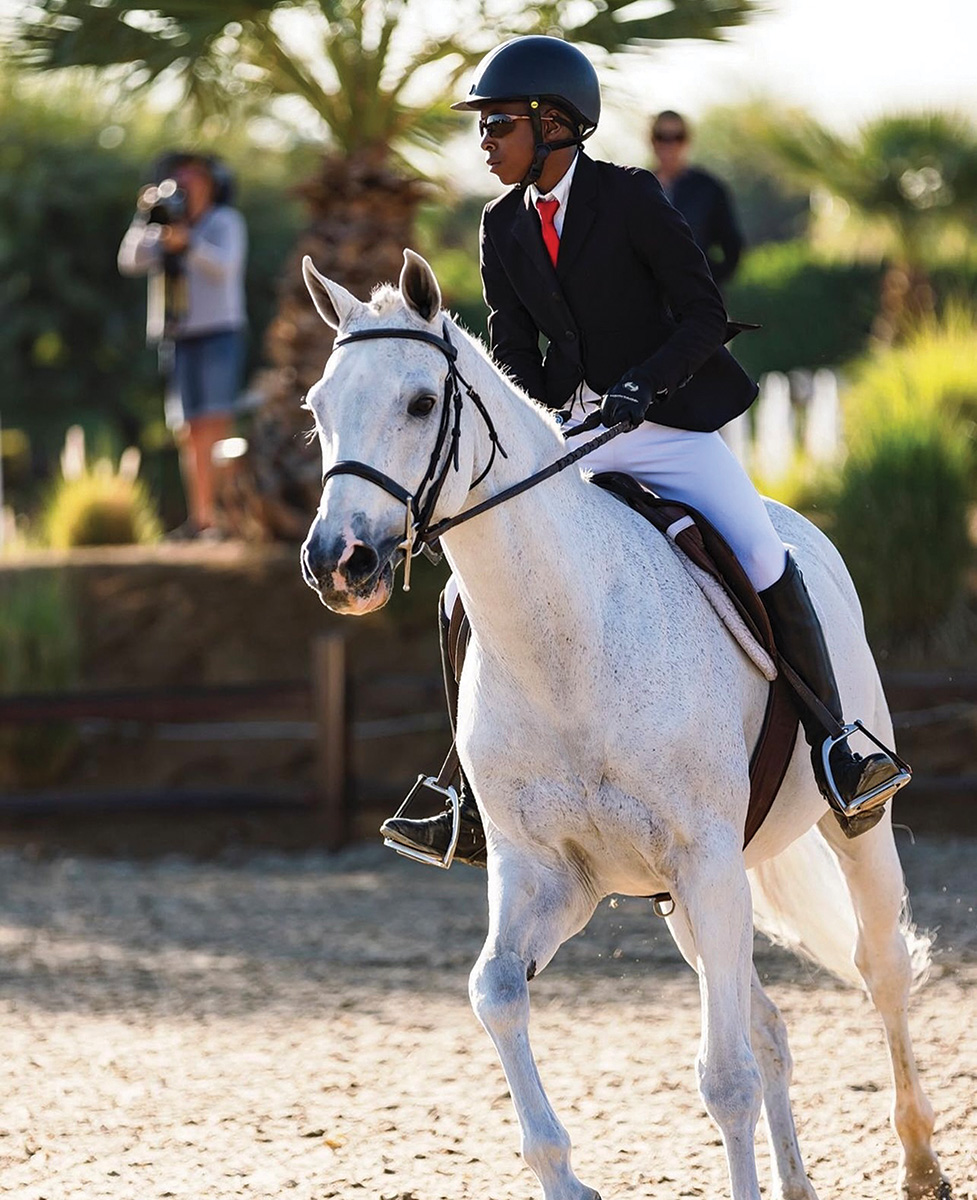During the height of the pandemic and racial tension around the U.S., two boys struggling with ADHD found healing through horses.

Don’t judge. This is when I thank God for transitional lenses. I’m at the Los Angeles Equestrian Center in the Hansom Dam ring. I look across the ring at my 10-year-old and 12-year-old boys sitting side by side, perched on their white horses. They look so dapper they would give any fairytale a run for its money.
As the gate opens and my 10-year-old enters the ring, I watch him double-check his heels, his reins, and his lead before breaking into a full canter. I sit off to the side of the ring to avoid the dirt because lord knows when I’ll see Rolanda (that’s my beautician). Also, because there’s a fear in my eyes that I never want my kids to see.
I watch as he snakes his way through the eight-jump course he learned just minutes before entering the ring—the same kid I have to remind every day to brush his teeth and put on deodorant—and I can’t help but be amazed.
Here comes the first jump. He leans forward in two-point position, and I see 1,200 pounds of pure muscle carry my baby boy over a wooden gate lined with beautiful flowers and successfully land on the other side. I think to myself, “God, the kid makes it look so easy.” But two years ago, both my boys were completely different. Things were anything but easy.

A Year Like No Other
The year 2020 found us battling three different wars: Covid-19, racial tensions in our country, and ADHD. Not to mention homeschooling, which I’ll get to in a minute.
I had to explain to my boys how seemingly overnight, our world had changed. We now had masks, curfews, protests—something that, as a Black woman, I had to grapple with telling my kids about. From George Floyd to Ahmed Aubrey, I had to explain to them why simple tasks they had been doing for years could no longer be. Yes, you are a Black boy and yes, they are killing innocent Black boys.
I pray you never have to have these conversations with your kids. Of course, the news was on in our house 24/7, each network pushing their own narrative to promote the ratings.
I noticed the one thing they all had in common was how they scoured the internet to find pieces of social media that would fit their agenda. It was in that moment that I realized as a mother of two African American boys, I was the only one who could teach them to take control of their own narrative. Because God forbid something happens to one of my boys—you for damn sure aren’t using some intimidating media-spun picture for your own propaganda.
For the Harrison household, it was a trifecta of stress that created the perfect storm. But they say pressure turns coal into diamonds, and our house was about to get blinged out.
Little Peach Pill
We had a game plan—but our only hanging chad was Adderall.
This little peach pill made my sons sleepy, tired and able to go for hours without eating. I mean, what was I expecting? The composition of Adderall, which contains amphetamine, was but a few rungs distant from its neighbor, methamphetamine.
A similar concoction called “pep pills” were given to the Nazis during the Blitzkrieg and helped curb the appetite of the rich and famous during the early 1900s.
The school district had been pushing my kids to get on ADHD meds for about a year, but I held strong. I didn’t think there was anything wrong with two little Black boys with a lot of energy. After all, boys are rambunctious, and wouldn’t that mean that all boys would need to be on Adderall?
But I couldn’t ignore the voice in my head that begged the question: “What if I’m wrong?” I had to distinguish if it was my ego talking or if my children really needed it. Eventually, I gave in.
Bored in the House
A year later, Covid hit and the schools closed, forcing me to face Adderall head-on in our homeschool, Harrison Prep Academy, Est. 2020.
Day in and day out, it was the same routine. But rather than wither beneath it, I quickly saw how the countless hours stuck in the house together could be an opportunity. What if we could turn those six pills a day into zero?
Over the next few weeks, I began weaning my kids off medication. It all started with a 4:30 a.m. wakeup, including an hour on the treadmill. Although that helped, the boys were missing outdoor play, and I knew that was the missing element to finally defeating Adderall.
But Los Angeles was at the height of Covid, and with curfew in full effect, traditional sports were obsolete. And no, my kids were not going to play basketball over Zoom. Not in my kitchen.
Then on December 2, 2020, I heard a bump from upstairs and came in to find my kids playing.
One was riding the other’s back, pretending to be on a horse. That’s when I had an idea—and here’s where the bling-bling comes in. I decided to put my two African American boys in one of the most predominately white sports in history: English riding. It’s estimated that less than 3 percent of equestrian riders competing in the U.S. are Black—let alone a set of brothers.
New Narrative

And so it happened that we traded the peach pill for a 1,200-pound animal that ultimately became the best form of therapy they’ve ever had. My children have an unexplained connection to these horses, and I may not fully understand it, but I’m along for the ride (and so is my wallet).
These gentle giants unlocked a piece of my children’s brains that not even Adderall could get to. They may not know this, but what they’ve stumbled onto has them writing their own narrative. Instead of seeing society’s representation of themselves, they’re able to create their own.
Needless to say, it’s opened doors and turned heads within the community. But most of all, it’s built their confidence and removed some of the “traditional” labels. The boys have gone from being followers to leaders. But don’t get it twisted: The ADHD didn’t just magically disappear. But it’s gotten better, and it’s giving me faith that we’re on the right track.
One Last Reminder
Today, my sons are finishing their second year of riding. And as I watch one of them careen over his last jump, I hear the crowd give a round of applause as he completes his course. Just as my 10-year-old leaves the ring, the 12-year-old enters it. They acknowledge each other with a nod. Even though they’re competitors, they’re still brothers and each other’s biggest cheerleaders.
With each gallop sounding like thunder against the dirt, I hold my breath. Once again, I watch the horse make its first vault over a 3-foot jump. I ask myself, have they stumbled into a potential career? Time will tell, but the opportunities seem endless.

With the cloud of Covid lifting, my prayer as a mother is that they continue on this path of success. And although a part of me wants to move on and completely forget my sons were plagued with ADHD, it lingers around the corner, peeking its head up from time to time.
My boys have been off Adderall for nearly three years now, but I can’t seem to toss their final bottle of meds. Maybe I keep it close at hand as a reminder of what was. Or maybe it’s a reminder of something that never has to be again.






